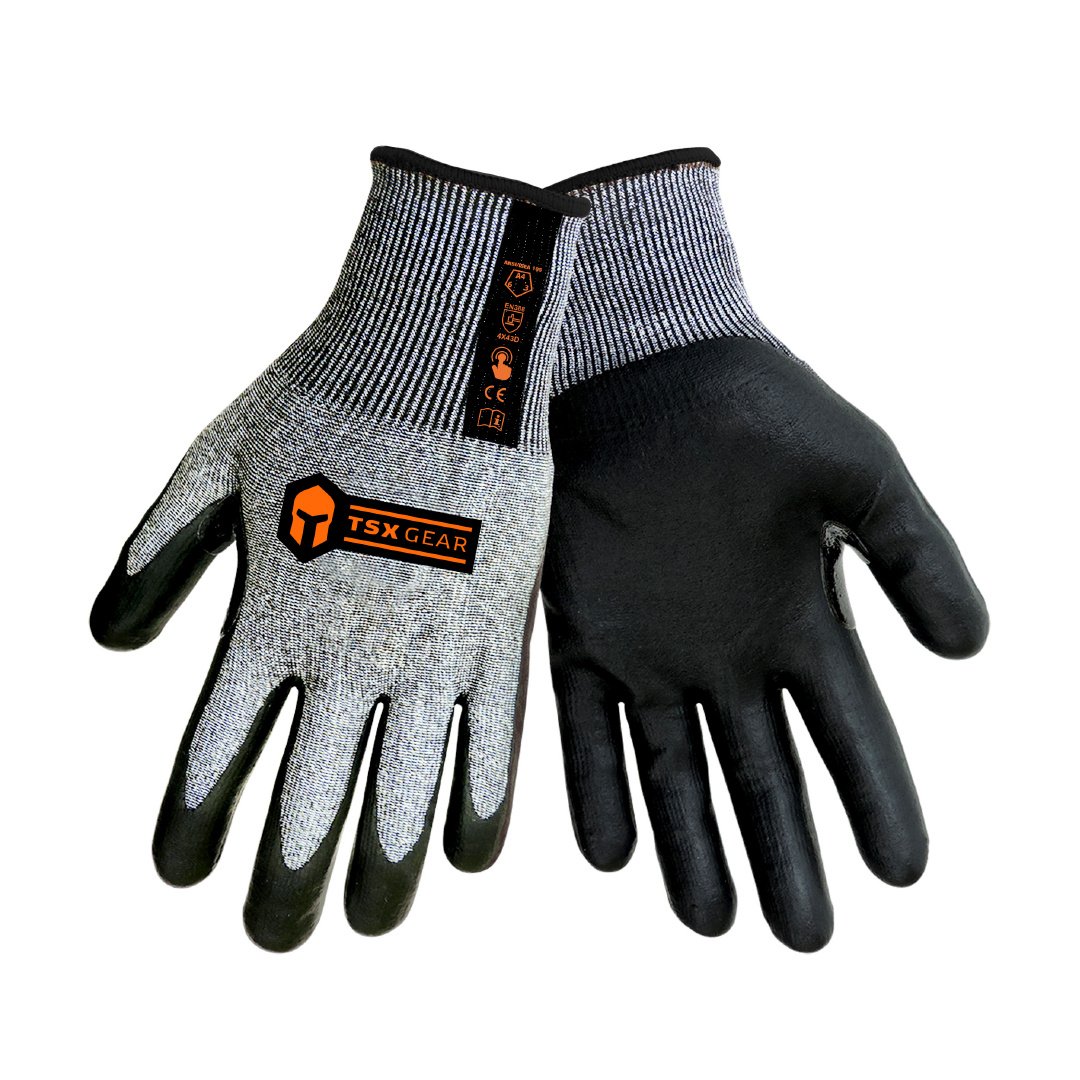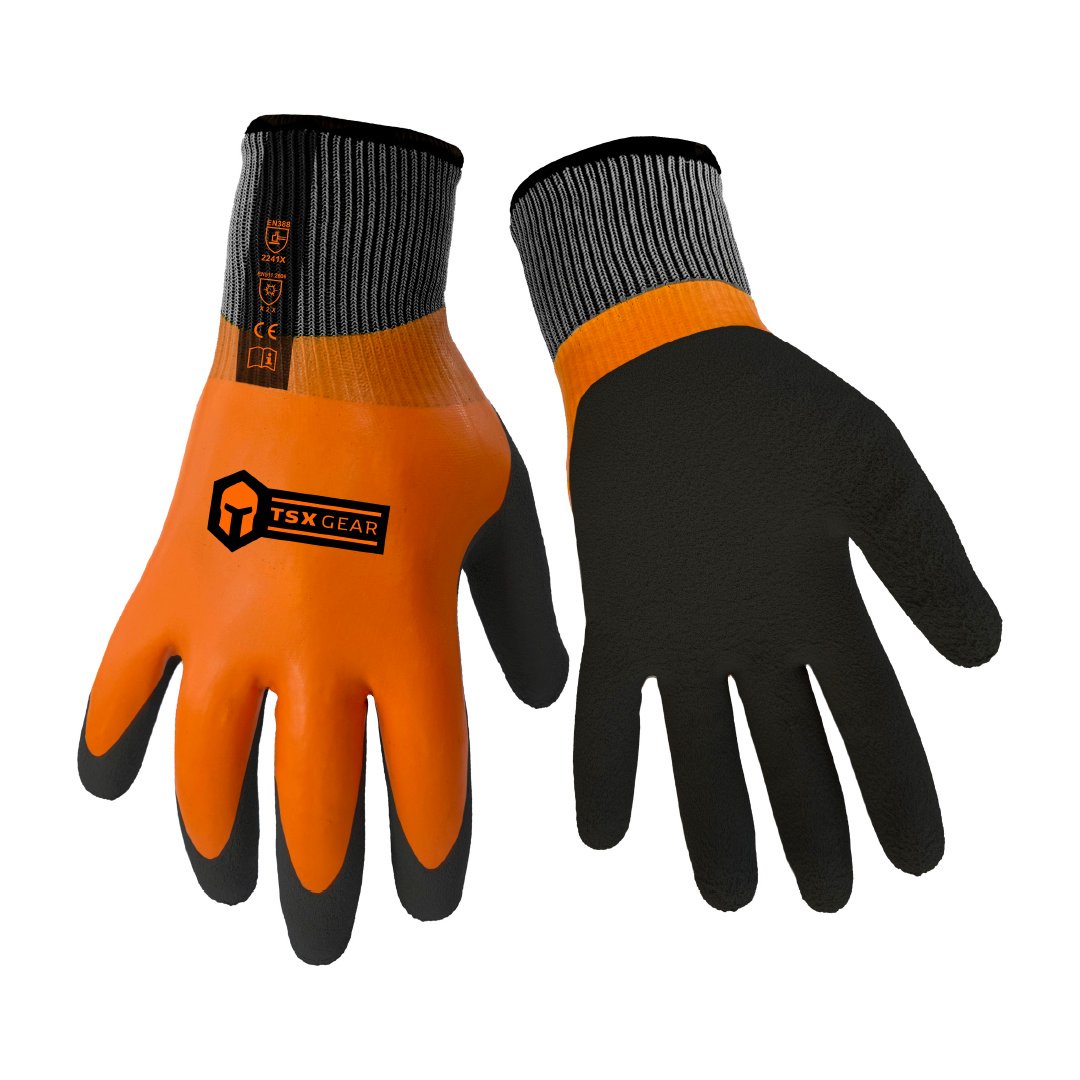Nitrile industrial gloves are a cornerstone of personal protective equipment in many fields. Known for their outstanding durability and chemical resistance, they offer crucial protection for professionals undertaking a variety of tasks. Selecting the right nitrile industrial gloves not only enhances safety but also boosts job efficiency.
When choosing nitrile gloves, understanding their unique features is key. These gloves offer numerous benefits and are used in diverse work environments. Whether considering industrial versus exam-grade options or evaluating pricing and procurement decisions, having the right information at hand is crucial. This guide also explores customization possibilities and highlights the industry's shift towards sustainable practices, preparing you for both current and future trends.
Nitrile industrial gloves set the standard in protective gear due to their exceptional qualities. By leveraging this information, you ensure compliance with industry standards while offering superior protection for your most valuable asset—your hands. Together, let's explore the best options and keep safety at the forefront of your work environment.
Understanding Nitrile Industrial Gloves
Nitrile industrial gloves have become essential in various industries due to their unparalleled reliability and versatility. Crafted from synthetic rubber, these gloves showcase remarkable strength and resistance to numerous chemicals, making them a preferred choice for many sectors where safety is paramount.
One of the significant advantages of nitrile gloves over latex is their hypoallergenic property. Unlike latex, which often triggers allergic reactions, nitrile gloves provide a safer, skin-friendly alternative. This feature is particularly beneficial in industries that demand prolonged glove use, ensuring that workers do not compromise comfort while maintaining top-notch safety. Recent trends reflect a 60% increase in the adoption of nitrile gloves, largely attributed to their excellent puncture and tear resistance.
Skeptics were quick to embrace nitrile gloves in the 1990s when they emerged as a durable, allergen-free option. Ongoing advancements in material science have further solidified their status as the go-to choice in workplaces that previously relied on latex. Their versatility is undeniable; whether it's dealing with abrasive substances or navigating environments with caustic elements, nitrile gloves consistently rise to the challenge.
The growing use of nitrile industrial gloves highlights a progressive shift in safety standards across diverse sectors. Their unmatched practicality in safeguarding professionals' hands underscores their expanding applications worldwide. For businesses aiming to enhance workplace safety and efficiency, recognizing the distinctive qualities of these gloves is invaluable.
Key Benefits and Applications
Nitrile industrial gloves hold a pivotal role across multiple sectors due to their unrivaled durability and chemical resistance. They are engineered to withstand wear and tear, ensuring longevity and thereby reducing replacement costs while boosting productivity in challenging work environments.
These gloves offer robust protection against hazards. Their puncture resistance is ideal for tasks where cuts or abrasions pose risks, while their chemical resilience ensures safety from harmful substances. This makes them indispensable for industries such as automotive and manufacturing, where interaction with oils and solvents is routine.
Moreover, nitrile gloves find applications in automotive, manufacturing, and janitorial sectors. They permit safe handling of automotive components, provide protection against machine grease, and shield against chemical burns during cleaning processes.
Complying with stringent safety regulations, nitrile gloves contribute significantly to reducing workplace accidents in environments concerning machinery or chemicals, thus enhancing productivity. As industries continue to evolve, nitrile gloves remain vital for maintaining safety and efficiency. Understanding these benefits assists businesses in selecting the right personal protective equipment. Up next, we will delve into how to choose nitrile gloves tailored to your specific requirements.
Selecting Nitrile Industrial Gloves
When choosing nitrile industrial gloves, several key factors ensure safety, efficiency, and comfort at work. Here’s a simple guide to what you should consider:
- First, consider the glove thickness. Nitrile gloves range from 4 to 15 mils. Lighter tasks might only need 4 mils, while tougher jobs could require up to 15 mils. For example, mechanics often favor gloves between 5 to 7 mils for repairing vehicles. This balance offers the needed durability and finesse.
- Next, grip texture plays a crucial role. Proper texture prevents slips, whether you're handling tools, operating machinery, or working with chemicals. For roles requiring precision, such as mechanics or assembly lines, full or fingertip texture on gloves enhances grip.
- Finally, ensure gloves comply with safety standards. Look for certifications like EN 455 and ASTM D6319. These standards ensure protection against chemicals, punctures, and abrasions, essential for lab or manufacturing environments.
By placing importance on these factors, you’ll find gloves that offer the right balance of protection and comfort. Think about the differences between industrial-grade and exam-grade nitrile gloves to match your specific needs in the field.
Choosing Between Industrial and Exam Grade Nitrile Gloves
Understanding the differences between industrial and exam grade nitrile industrial gloves is crucial for selecting the right type for your needs. Each serves diverse purposes and meets different standards.
Industrial nitrile gloves offer exceptional durability and strength, making them ideal for industries such as automotive, manufacturing, and food processing. They are designed to resist harsh chemicals and withstand abrasion, lacking FDA skin safety certifications, hence unsuitable for medical use. These are perfect for environments where chemical exposure is common, prioritizing performance over strict skin safety requirements.
Exam grade nitrile gloves, on the other hand, are essential in healthcare and food services. Their compliance with FDA regulations ensures that they safely handle pathogens. With a design that provides sensitivity and flexibility, they are tailored for medical exams and surgeries, making them a staple in clinical settings.
Industrial nitrile gloves offer financial and operational benefits to businesses. More cost-effective than medical-grade gloves, they are durable enough to minimize tearing and enhance efficiency, leading to reduced waste and procurement costs.
When choosing nitrile industrial gloves, assessing your specific environment is key. Balancing cost, safety, and performance, while considering market trends, supplier reliability, and the benefits of bulk purchasing, will provide consistent value and supply stability.
Factors Affecting Pricing and Procurement
The process of acquiring nitrile industrial gloves involves strategic considerations of pricing and procurement. By understanding these facets, businesses can make informed decisions that prioritize cost-effectiveness while ensuring compliance with safety standards. For instance, eliminating middlemen in the supply chain can lead to significant cost reductions. TSX Gear exemplifies this by selling directly to consumers, thus cutting distribution overheads and offering competitive pricing without compromising quality.
Moreover, purchasing in bulk can further influence costs. Large-scale buying allows companies to enjoy the benefits of economies of scale, leading to a consistent supply and stable pricing irrespective of market fluctuations. Balancing cost with quality is crucial, especially when adhering to stringent safety standards. While cheaper glove options may be tempting, assessing their compliance is paramount. Investing slightly more in premium gloves can avert safety issues, proving to be a more valuable investment over time.
In the next section, we'll delve into the special features and customizations of nitrile gloves. This will provide insights into how businesses can align these products with their unique industrial requirements, addressing challenges that standard gloves might not meet.
Enhancements and Options for Nitrile Industrial Gloves
Choosing nitrile industrial gloves with custom features can significantly enhance their functionality in various work environments. Tailoring these gloves boosts safety, comfort, and efficiency, meeting the specific demands of industrial settings.
Color Options: In industrial settings, color-coding gloves is essential for distinguishing roles and tasks. Different colors can indicate various tasks or hazard levels, providing clear visual cues. For instance, one color might be used for chemical handling and another for food processing. This system reduces errors and ensures adherence to safety protocols.
Optimal Size and Fit: The right fit is crucial for comfort and safety. Tight gloves may cause fatigue, while loose ones can impede dexterity and pose safety risks. Offering various sizes ensures that gloves do not hinder grip or fine motor skills, which are vital for precision tasks.
Textured Grip: In slippery environments, textured surfaces are vital to enhance grip, improving control and precision. This reduces the risk of accidents by allowing better handling of oily parts, especially in industries like automotive maintenance.
Considering industry-specific needs when choosing nitrile industrial gloves maximizes workforce safety and efficiency. Aligning glove features with tasks ensures optimal results. As safety standards evolve, the focus shifts to sustainability, addressing ecological and economic benefits. Our next discussion will cover innovations in glove manufacturing and efforts to reduce waste.
Future Trends and Sustainability Initiatives
The nitrile industrial gloves industry is moving towards eco-friendly practices to address environmental concerns. Traditional gloves present challenges with biodegradability; however, an exciting development is the introduction of biodegradable nitrile gloves. These gloves promise faster decomposition while continuing to meet essential industrial protection standards.
Recycling enhances the sustainability of nitrile gloves, although effective systems have been sparse. Industry leaders are now actively collaborating with waste management agencies to develop better recycling processes. A notable initiative is the closed-loop system where used gloves are transformed into new products. This significantly reduces landfill waste and sets a precedent for a more sustainable approach.
While focusing on environmental impact, ensuring industrial safety remains paramount. Eco-friendly gloves must uphold rigorous safety standards akin to traditional versions. Innovators are achieving breakthroughs that ensure durability and chemical resistance are uncompromised. This sets a new benchmark for eco-conscious industrial safety gear.
These sustainable practices have the potential to revolutionize glove manufacturing and usage. By prioritizing eco-friendly methodologies, the industry aims to minimize environmental harm and promote responsible production and consumption. With ongoing advancements, the future of nitrile industrial gloves holds promise for safer and greener solutions.
Conclusion
Choosing the right nitrile industrial gloves is essential for ensuring both safety and efficiency. Known for their chemical resistance and strong durability, these versatile gloves play a vital role in diverse settings, ranging from medical to industrial environments. The importance of their key benefits cannot be overstated as they are crucial in ensuring safety across different sectors.
When selecting the best nitrile gloves, it's important to assess your specific needs. Consider the differences between industrial-grade and exam-grade options, understanding that each type serves a unique purpose. Price factors, including special features and potential customizations, can further guide your decision-making process. As the market evolves, newer sustainability initiatives and innovations in nitrile gloves make it easier to find options that align with modern values.
With a better understanding of these aspects, you're well-equipped to make informed choices about nitrile industrial gloves that meet your operational requirements. Use this guide to explore and focus on the gloves that fulfill your needs, thereby ensuring safety and performance in the workplace. Investing in the right nitrile gloves is a decision that promises long-term security and efficiency.
About TSX Gear
TSX Gear is a leading U.S.-based manufacturer specializing in crafting high-performance gloves for industrial safety applications. Our dedication to ensuring worker protection while providing cost-effective solutions sets us apart in the industry.
By simplifying the ordering process and offering competitive pricing through direct sales, we empower businesses to enhance their safety protocols without unnecessary expenditures.
Join other companies prioritizing safety and efficiency – explore our range of expert solutions today by visiting TSX Gear.





